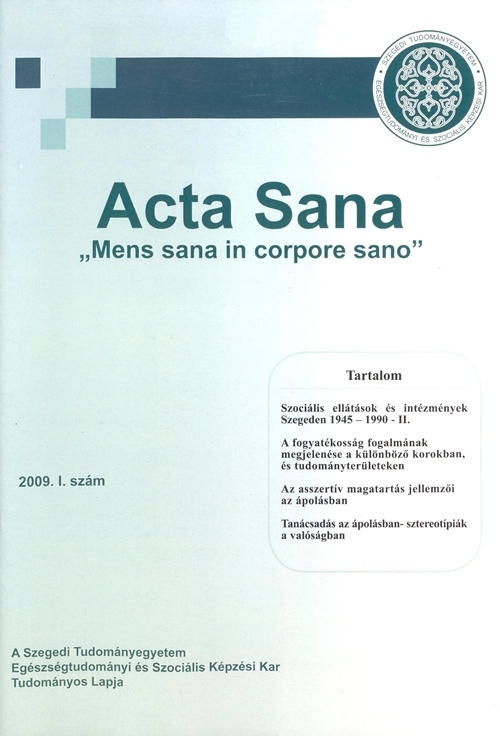Szociális ellátások és intézmények Szegeden 1945 - 1990 : II.
##plugins.themes.bootstrap3.article.main##
Absztrakt
The second part of the study deals with the history of the social services and with the
institutes for the socially deprived adult population. It explains briefly the changes of
different forms of benefits. It analyses the process of the integration of the institutes,
which were divided and non-cooperating in the beginning. The unification and
cooperation was a difficult task, which advanced slower than the integration of public
health institutions despite the fact that the institutes were owned by the state or the
local council. By the end of the era, two „unified” institutions were still in operation in
Szeged. The residential homes for the elderly served as a basis for the integration. Their
specialization, professional level and the number of residents increased considerably
until 1990 but still they could not meet all the needs. The establishment of day centres
and organizing home care created the conditions for the three-level integral care system.
While it alleviated the lacking services, it could not eliminate them. Social workers in
Szeged played an initiative role in the development of the new forms of care: day
centres, residential homes for elderly and family assistance as an experiment.
The second part of the study explains briefly the problems of employment of the
handicapped and the partially disabled people.
The study is a part of a piece of research that explores the nearly half century long
history of the health and social services in Szeged.
institutes for the socially deprived adult population. It explains briefly the changes of
different forms of benefits. It analyses the process of the integration of the institutes,
which were divided and non-cooperating in the beginning. The unification and
cooperation was a difficult task, which advanced slower than the integration of public
health institutions despite the fact that the institutes were owned by the state or the
local council. By the end of the era, two „unified” institutions were still in operation in
Szeged. The residential homes for the elderly served as a basis for the integration. Their
specialization, professional level and the number of residents increased considerably
until 1990 but still they could not meet all the needs. The establishment of day centres
and organizing home care created the conditions for the three-level integral care system.
While it alleviated the lacking services, it could not eliminate them. Social workers in
Szeged played an initiative role in the development of the new forms of care: day
centres, residential homes for elderly and family assistance as an experiment.
The second part of the study explains briefly the problems of employment of the
handicapped and the partially disabled people.
The study is a part of a piece of research that explores the nearly half century long
history of the health and social services in Szeged.
##plugins.themes.bootstrap3.article.details##
Hogyan kell idézni
Bárány, Ferenc. 2009. „Szociális ellátások és intézmények Szegeden 1945 - 1990 : II”. Acta Sana 4 (1):7-14. https://ojs.bibl.u-szeged.hu/index.php/actasana/article/view/18399.
Folyóirat szám
Rovat
Cikkek

